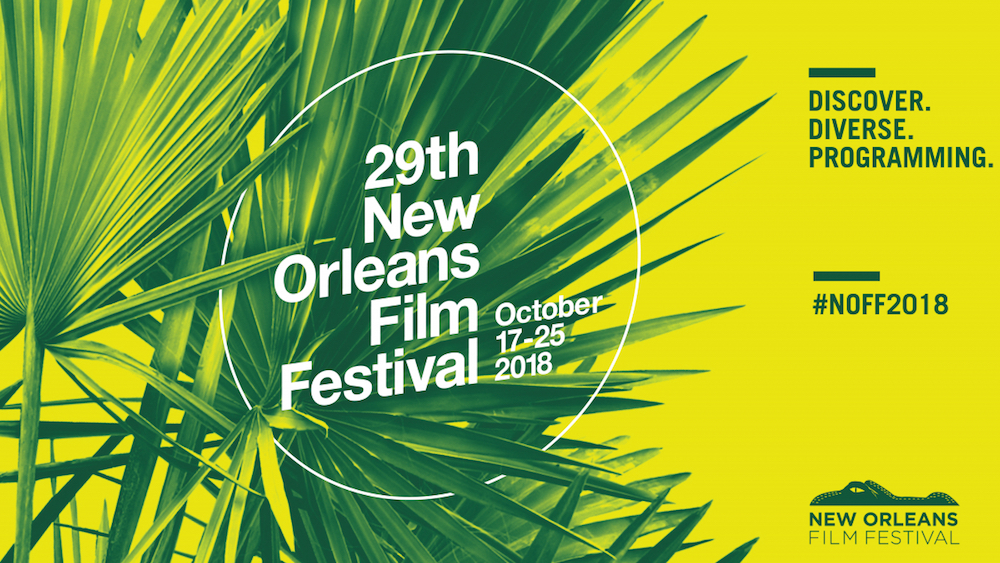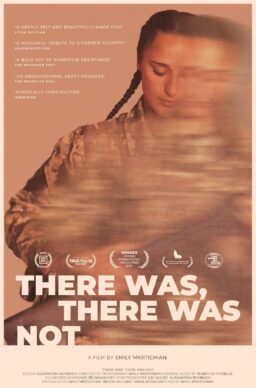A place of limitless character and opportunity for adventure, New Orleans remains one of the best cities in America precisely because it can’t be anything but itself. It operates entirely on its own rhythms, choosing at every moment to appreciate life via the tools at its disposal: food, drink, music, art, and good company. New Orleans gives every person who passes through its borders the chance to live like a local (correcting for temperament and relative sobriety, of course) and experience the feeling of being immersed in such rich cultural history.
The New Orleans Film Festival, which just wrapped its 29th year, channels the spirit of its city into its offerings. Audiences can see a mix of some of the year’s most anticipated films of the fall (“Roma,” “If Beale Street Could Talk,” “Green Book,” “Widows”), as well as the best in regional cinema, and plus a few special presentations. One of the films featured at the festival this year was “Cane River,” a lost piece of Louisiana film history about a “Romeo and Juliet”-esque love story starring two African Americans in one of the first “free communities of color” in the South. Directed by the late Horace Jenkins, “Cane River” was restored by the Ebert Foundation and IndieCollect from the original film negatives found in the DuArt film laboratories. Chaz Ebert presented the film’s first screening in over 36 years. Read Chaz’s article about the film, its history, and her experience in New Orleans for more information.
Below, RogerEbert.com has highlighted three world premieres from the New Orleans Film Festival. Together, they represent a trio of unique visions that strive to probe at something fundamental and true within the American spirit.

“Buckjumping”
The ghost of Les Blank flows through Lily Keber’s documentary “Buckjumping,” an examination of New Orleans dance culture in all its facets and forms. Named after a type of fast-paced footwork dance typically attributed to second line parades, “Buckjumping” brims with curiosity, empathy, and respect for its subjects, capturing them at their most passionate. Keber picks up Blank’s mantle of subcultural portraits with an emphasis on lived process. She assumes a certain familiarity that bypasses the need for clumsy exposition, expecting her audience to keep up with the ideas and patois in order to better immerse them in the lifestyle. Her loyalty remains with the dancers and that means communicating their world on their own terms.
“Buckjumping” travels between a few different dance communities—second line steppers, Creole Indians, bounce clubs—which allows representatives to speak their minds about the intersection of dance and society. This conversational freedom facilitates compelling discussions about the abolitionist origins of Mardi Gras Indians, the thin line between sexualization and empowerment, and how dance can embolden racial identity. Keber keeps all the ideas on an even keel for the most part, moving between them with purpose and imbuing the film with a breadth of experience.
Ironically, Keber’s film falters rhythmically; “Buckjumping” mostly operates in one mode and thus the editing tempo can become monotonous, especially when it routinely cuts back and forth between talking head and dance footage. This would be deadly if the dance footage itself wasn’t so compelling. Keber’s team captures each dancer as if they’re a body in free-floating space, divorced from history and geography, and a human being with deep roots in their hometown and those that surround them. “Buckjumping” illustrates how dance can be a vehicle for celebration and grief, desire and reflection, pleasure and pain. Keber takes to heart the definition that opens her film: buckjumping is a dance of liberation, and thus, she appropriately conveys that concept through a liberated filmmaking style.

“Jaddoland”
Nadia Shihab’s warm portrait of her mother—Lahib Jaddo, artist, teacher, and Iraqi expat—lives and dies by its focus. Whenever Shihab commits to chronicling her mother’s artistic process, or her complicated relocation from Iraq to Lubbock, Texas, or her fractured identity as a member of a diasporic community removed from but not ignorant of their home country’s strife, “Jaddoland” sings with affection and interest. Shihab’s palpable love for her mother courses through her film and “Jaddoland” functions both as a tribute to her work and life as well as a sincere interrogation of the idea of “home,” how the concept morphs and evolves depending on one’s own comfort with their journey. Filtered through a raw, intimate style influenced by Jaddo’s own art, “Jaddoland” excels when it foregrounds Jaddo and the junction between work and family.
However, “Jaddoland” is less successful when Shihab tries to tell her mother’s story through other people, such as her grandfather or her brother or Jaddo’s neighbors. Individual sequences featuring these subjects are often sweet or funny, but they’re still digressions that tend to either lose the thread or kill the film’s pacing. “Jaddoland” occasionally feels bloated in an interesting way, as if Shihab has too much compelling material to reckon with. The film sometimes pivots to capturing Lubbock in the present day, caught between tradition and modernity, which is fascinating, especially when examined by those who’ve lived there, but also feels like a different film altogether.
Shihab herself is a fun behind-the-camera presence and “Jaddoland” scans as especially personal whenever she “intervenes” off-screen, either by asking direct questions or engaging with whatever is being filmed. Whenever she and her mother speak directly to each other, “Jaddoland” teems with a relaxed, low-key energy that captures the messy nature of a tumultuous life as lived. Everyone in the film is a work in progress trying to smooth out the edges the best they can.

“The True Don Quixote”
A lo-fi, suburban adaptation of Cervantes’ classic novel, “The True Don Quixote” has exactly one joke: a delusional man believes he’s Don Quixote and subsequently causes quaint chaos in his local Louisiana parish. Chris Poché’s debut feature tells variations on that joke in a few different settings—an abandoned field, the marsh, and a local inn to name a few—with local color thrown into the mix, but the film’s success largely depends on the audience either thinking the joke is funny or believing that the other sane characters’ bemused reaction to the joke is cute or clever. Needless to say, it’s a bit of a gamble.
The film’s ace in the hole, however, is Tim Blake Nelson, who plays the eponymous “Danny Kehoe” and delivers the majority of Poché’s overly verbose dialogue with panache. He not only elevates “The True Don Quixote” with his participation, he also dictates the energy of every single scene, since the film consists of solo work or two-handers. He never leans into the inherently maudlin nature of his character (after all, he’s playing a man who suffers a severe mental break) but rather amplifies his playful nature, illustrating how his old-timey charm could theoretically delight a town instead of terrify them. His raconteur spirit goes a long way to keeping the entire film from completely teetering off the edge of a cliff.
Episodic in nature befitting the source material, certain sequences in “The True Don Quixote” are better than others. The ones that employ the most actors tend to have a better comedic energy, while the scenes between Don Quixote and his squire Sancho (Jacob Batalon) tend to devolve into repetition and monotony. The plot itself is mostly arbitrary, the ending is an odd whiff, and the film drags in spot, but yet “The True Don Quixote” still entertains in a low-key capacity. It’s worth noting that Poché makes great use of the Louisiana landscape, which provides Quixote’s oddball adventures with a sense of scale and eerie alienation. It imbues the silliness with just enough existential import to not render the whole enterprise weightless. It’s a shame about the narration, though. No disrespect to Roy Blount Jr., but there’s no earthly reason to keep poking the viewer in the ribs, even if you want to give the film an epic framework.












